La Sportiva Helios III
Test Locations: Crested Butte & Boulder, Colorado
Test Duration (so far): 65 miles
Stated Stack Height: 20 mm (heel) / 16 mm (forefoot)
Stated Heel to Toe Drop: 4 mm
Stated Features:
- Ultralight Mono-burr mesh and rip-stop nylon upper for maximum durability and breathability
- Wrap-around cuff with 3D foam padded inserts for out-or-the-box, all day comfort
- Frixion® At 2.0 rubber compound provides durability and traction
- Flexible and crush-resistant rear heel counter means easy on/off and increased comfort
MSRP: $125.00
Size Tested: Women’s Size 8
Stated Weight per Shoe (Size 39): 6.2 oz / 177 g
Blister Measured Weight per Shoe: 6.56 oz / 186 g
Reviewer (Runner Profile): 5’10”, 115 lbs
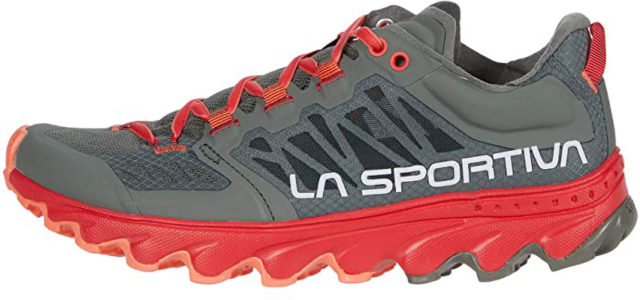
Intro
Ever since it was first released about 7 years ago, the Helios has always been an outlier in La Sportiva’s trail running lineup. Typically, La Sportiva’s shoes tend to be very stiff through the midsole, often feature a protective rock plate, and are just generally designed for very technical mountain trails.
Conversely, the Helios I and Helios II were designed to be minimal, flexible, fairly unsupportive shoes that provided ample ground-feel and did so at a very low weight. When the Helios II was discontinued in the United States several years ago, I was bummed; I really like a more minimal shoe for flatter, less technical trails where some of La Sportiva’s other models feel like “too much shoe” for my everyday runs. Fortunately, La Sportiva recently relaunched an updated version of the Helios, the Helios III, which has similar design intentions but with some modifications to the upper, lacing system, and midsole.
I’ve so far put about 65 miles in the Helios III to get an initial idea of how similar they feel to the Helios II, as well as some other options in the more minimal category. In addition to average training days, I also ran a 50k in the Helios III to see if they’d live up to the “all-day comfort” that La Sportiva claims they provide. Here’s my take on the Helios III so far, and I’ll be updating this review after I’ve spent more time in the shoe.
Fit
As always, we highly recommend trying on any shoe before buying, when possible. With that said, I can add some thoughts on how the Helios III fits my feet, which are fairly low volume but with large bunions.
Overall, I’d say the Helios III fits similarly to many other La Sportiva models, with a lower-volume upper and narrower toe box than many other brands. La Sportiva’s shoes generally fit my low-volume foot quite well, and the Helios III held true to this. The Helios III’s tongue is slightly more cushioned than it was in the Helios II, and it’s also connected to the sides of the shoe for a more secure fit. The Helios III’s updated tongue felt more comfortable than the previous model, and it also didn’t move from side to side as much during runs.
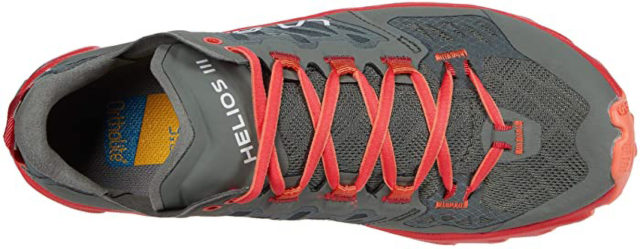
The Helios III also features a standard lace system, a change from the “quick lace” system on the previous model. I found this traditional lace system to be a huge improvement. The Helios III laces are stretchy and I had to re-tighten them on my first run, but unlike the quick laces on the Helios II, the Helios III’s laces stayed tight after that. I have had the same issues with other shoes that have a quick lace system, including some Salomon shoes, so I was not surprised that the previous model of the Helios had this issue.
I’d say that the Helios III feels pretty similar to the Sportiva Kaptiva in terms of fit, but that is about the extent of the similarities between those two models. The Helios III also fit similarly to the Salomon S/Lab Sense 8, with both featuring a snug-fitting, thin upper, a tight fit through the midfoot, and a pretty narrow toe box.
During my 50k run in the Helios III, I did experience some issues with blisters. This could have been from the sock / shoe combination, but regardless, I did finish with blisters on my big toes on both feet and the arch of my left foot. As I have mentioned in previous reviews, I do have rather large bunions, so these blisters could have been caused by the shape of my feet, as I have had similar blisters from some similarly narrow shoes like the La Sportiva Bushido II and the Salomon S/Lab Sense 8.
Aside from the blisters, the Helios III stayed tight on my feet during the 50K with no need to re-tie or adjust the laces. I did experience some foot fatigue, but I think that was due more to the minimal midsole / outsole than the fit of the shoe. While I don’t think I would personally run anything longer than a 50k in the Helios III, they are quickly becoming a favorite for my normal training runs, which range from 8-12 miles.
Weight (and Comparison)
The Helios III is a very minimal and lightweight shoe. I personally loved the more minimal design of the Helios II, and the Helios III delivers a similar feel at an even lower weight. Overall, the weight and nimble feel of the Helios III reminds me of the similarly lightweight Salomon S/Lab Sense 8 (though the two are different in other regards, which I get into below).
For reference, here is how the stated weight of the Helios III compares to some other trail shoes with roughly similar stack heights and / or design intentions (all stated weights are for a US Women’s size 8, unless otherwise noted).
160 g / 5.7 oz — Arc’teryx Norvan SL
177g / 6.2 oz — La Sportiva Helios III
183 g / 6.45 oz — La Sportiva Helios II
184 g / 6.5 oz — North Face Flight RKT
187 g / 6.6 oz — Altra Superior 4.0
195 g / 6.9 oz — Salomon S/Lab Sense 8 (US Men’s size 9)
206 g / 7.3 oz — Altra King MT 2
210 g / 7.4 oz — Topo Athletic Runventure 2
215 g / 7.6 oz — Hoka One One Torrent 2
225 g / 7.9 oz — La Sportiva Kaptiva
243 g / 8.6 oz — Inov-8 Trailroc 285
Upper
As I mentioned above, the Helios III’s upper is very thin and lightweight. It’s made of a mix of mesh, ripstop nylon, and some minimal overlays. There is also some additional padding around the ankle and heel cup to provide a bit of added support and comfort.
In my opinion, the Helios III’s new upper is the most notable improvement from the Helios II. As already touched on, the sides of the tongue are now connected to the midsole. This makes the upper fit a bit snugger overall, which I found made the shoe more comfortable and confidence-inspiring since there was minimal movement of my foot within the shoe. In addition, the return of a traditional lacing system makes the shoe easier to adjust in areas where you may need it to be tighter or looser (whereas custom tightening was not really possible with the old quick laces).
I’ve found the Helios III to be very breathable, even on very hot (85℉/ 30℃ +) days. While my feet still sweat a bit in the Helios III, it felt far more breathable than some of the other shoes I have run in like the Kaptiva or Bushido II. The added padding around the ankle as well as on the tongue helped the upper part of my foot feel both more supported and just more comfortable overall. The upper is still very lightweight and thin, so the support it provides for your feet is relatively minimal, but I still love it for training runs and Sportiva makes tons of other shoes that are far more supportive and designed for technical terrain. The padded, wrap-around cuff made the Helios III a bit more comfortable overall on my feet, but I’m not sure it made that big of a difference from the previous model.
Midsole and Cushioning
The Helios III provides a very minimal amount of cushion and allows for plenty of ground-feel. The shoe has no rock plate and is very flexible — with minimal effort, you can actually curl the toe back to the heel of the shoe. If you like being able to feel exactly what you are stepping on during a run, the Helios III could be a shoe for you. With a 20 mm stack height in the heel and 16 mm in the forefoot, the Helios III kept my foot feeling close to the ground, feeling similar in this regard to the Salomon S/Lab Sense 8, which has an identical stated stack height. The Helios III’s stack height is 1 mm higher than the Helios II, though I never noticed much of a difference in terms of how the two shoes’ midsoles felt on the trail.
Personally, I like shoes that allow for more ground feel, especially during shorter runs or workouts on smoother trails. The Helios III’s low weight and low stack height made this shoe feel quick and light underfoot. I did experience some foot pain when I stepped on particularly sharp rocks, and combined with its minimal upper, that makes the Helios III less than ideal for very technical terrain. Again, that’s not what the Helios III is designed for, and Sportiva makes a lot of shoes that are designed for those sorts of runs. But for feeling fast and light on smoother trails, I felt that the Helios III’s midsole provided an ideal balance of cushion and ground feel.
Overall, the Helios III feels very efficient; I never felt like I was “sinking” into its midsole. The Helios III does not feel super “poppy” or energetic though, nor is it particularly stiff, which is a departure from some of the very stiff, minimal shoes on the market. Compared to other low-stack shoes, the Helios III feels less energetic than the Salomon S/Lab Sense 8 and Arc’Teryx Norvan SL, which might be better options for races or longer runs where those things may be more important. If you are looking for something with a bit more cushion and structure, the La Sportiva Lycan may be a good option since it is still relatively soft but with a much more cushioned feel on trail.
Outsole and Traction
The Helios III’s outsole utilizes La Sportiva’s Frixion Blue rubber compound (also known as FriXion AT 2.0) and is designed to provide traction on a variety of surfaces. FWIW, FriXion Blue is the most durable / least grippy version of Sportiva’s FriXion rubber compounds. The Helios III’s outsole has ridges running horizontally across the shoe with additional triangular lugs on each ridge, shown in the image below. The ridges are a big part of why the shoe flexes and conforms beneath your foot, while the triangular lugs add additional grip on slightly looser surfaces.
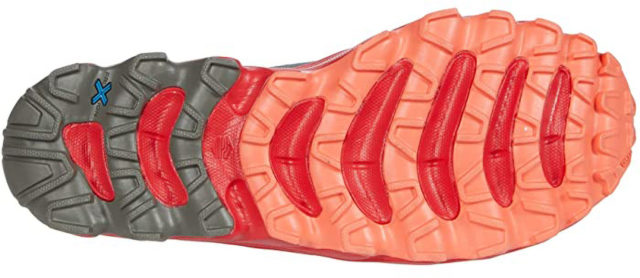
While I haven’t taken the shoe on any extremely slippery or technical trails yet, the outsole has provided a secure feel on the Flatirons Vista Trail, the Doudy Draw Loop, and Heil Ranch all located in Boulder, Colorado. These are all relatively non-technical trails that consist primarily of packed dirt with some rocky sections. The Helios III has provided plenty of grip on dry rocks, crushed gravel, and smooth packed dirt.
I plan to take the shoes on more technical and variable conditions in the next few weeks, and will report back how the outsole does. But based on the outsole design, rubber compound, and the rest of the shoe’s design, it’s safe to assume that the Helios III won’t be a great choice if you primarily run on very rocky, loose, and / or wet trails.
On The Trail
During my time so far in the Helios III, I’ve been impressed by the upgrades vs. the previous model.
The new laces are a huge improvement that I noticed right off the bat. While quick-laces are … “quick,” I felt they were a flaw in the Helios II since they didn’t hold tension or allow for as much customization as I would’ve liked. The new laces allowed me to get my foot situated comfortably in the shoe and not have to worry about the laces coming loose.
I’ve run the majority of my miles in the Helios III on smoother trails, and I think that’s where it excels. For shorter, faster-paced runs, I think the Helios III is a strong option due to its lightweight construction, more minimal cushioning, and fast feel it provides while running.
During the 50k / 31-mile Bigger than the Trail run that I ran with my training partner as a fundraiser for mental health resources, I did find that by about mile 26, my feet were starting to feel very fatigued in the Helios III. I felt more pressure in the pad of my foot and arch with each step, which made me even more ready to be done with the run. This might happen in other more minimal shoes as well, especially if you tend to primarily run in more supportive, cushioned shoes. But the Helios III’s flexible midsole and minimal upper did not support my foot as well as a more structured shoe, like the La Sportiva Kaptiva or the Salomon Sense Ride 3. Based on that experience, I probably wouldn’t choose the Helios III for a run longer than a 50k.
But as I mentioned above, I really have enjoyed running in the Helios III for training runs ranging from 1-16 miles. They feel light and nimble on trails with non-sharp, flat rocks while still feeling smooth on gravel or packed dirt. If you run on trails that contain a lot of jagged rocks, I would not recommend the Helios III as of right now. I do find myself avoiding stepping on pointy rocks in this shoe, as I can feel those through the Helios III’s soft, rock-plate-less midsole. This doesn’t really deter me from using the shoe, though, as that’s just the nature of a low-profile shoe without a rock plate.
I’m eager to put more miles in the Helios III’s to see how they perform on technical, rocky, and / or wet trails. I doubt that they’re going to be very ideal for that sort of terrain, but I’ll report back when I can attest to that. I also haven’t taken them on any runs with a lot of elevation change yet, so I’m interested to see how they perform on significant ascents and descents.
Finally, it’s worth touching on the Helios III’s fairly low 4 mm heel-to-toe drop. It’s a lower-drop shoe than most other Sportiva models and consequently does seem to perform better with a forefoot strike than a heel strike.
Durability
Since I have so far only put about 65 miles in the Helios III, I can’t say much about long-term durability. Right now, they show no signs of wear in the outsole or the upper, which is a good sign and basically what I’d expect at this point. I’ll update this section after I’ve run more in the Helios III, including more time on more technical trails. It is worth noting that my pair of the Helios II held up very well, especially for such a minimal shoe. I ran nearly 600 miles in that version and, while the laces eventually became very stretched out and the outsole got worn rather bare, it took close to 600 miles before I decided it was time to retire them.
I anticipate the Helios III to offer similar long-term durability, with the main questions being whether the traditional laces will last longer and how the new upper will hold up.
Who’s It For?
If you are looking for a pretty minimal, flexible trail shoe with a lower stack height and shorter heel-to-toe drop, the Helios III is worth a look. For those of you who ran in the previous Helios II and liked the way it felt, I would recommend trying out the Helios III. It has a very similar feel to the Helios II, but I think the improvements to the upper make it a much better fitting shoe — at least for my foot. If you have a lower-volume foot and like the way that other La Sportiva shoes fit, the Helios III should fit pretty similarly, but that is about where the similarities end.
The Helios III diverges away from the structured, stiff, mountain-specific shoes that La Sportiva generally makes. So far, I think it is a good option for less technical, flatter runs in addition to faster-paced workouts. As I run in the shoe going forward, I am interested to see how it does on more technical mountain running. But so far, I think the Helios III is really ideal for quicker, less technical runs where you’ll benefit from its soft, flexible midsole and low weight and wouldn’t need the stiffer, more supportive ride of a shoe designed for more technical terrain.
Bottom Line
I was very glad to see that La Sportiva had brought back the Helios, and with the new updates to the shoe, I feel the Helios III is better than the previous iterations. For most of the terrain I tend to run on a daily basis, many of La Sportiva’s shoes feel too stiff and structured. Due to its ultralight, soft construction, the Helios III is a unique shoe in the La Sportiva line-up and was one that I found to be a solid option for many of the less technical trails that I frequent.
The Helios III maintains many of the great aspects of the previous model (flexible midsole, low weight, great breathability) but with some notable improvements to the upper and lace system, making it fit and feel better than the Helios II, at least for my feet. While it performed pretty well during a 50k run, my feet were very sore by the end and I think there are plenty of more supportive, more cushioned shoes that’d be better for 50k+ runs. But for shorter training runs and / or smoother terrain, the Helios III has been excellent.
I’m really looking forward to logging more miles in the Helios III. I plan to do some more technical runs here in the next few weeks, so stay tuned for an update on how the Helios III performs in the long-term and how it handles a wider variety of terrain.

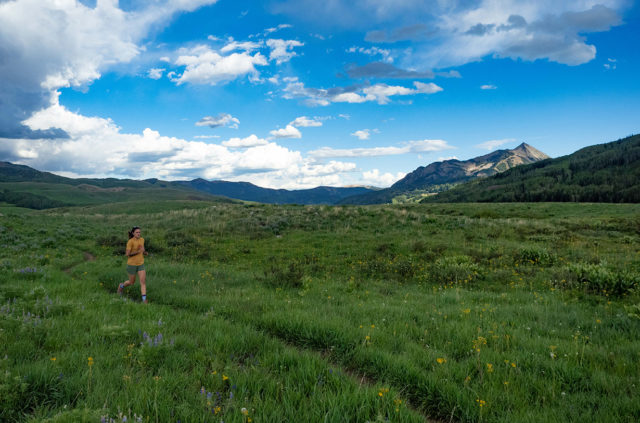
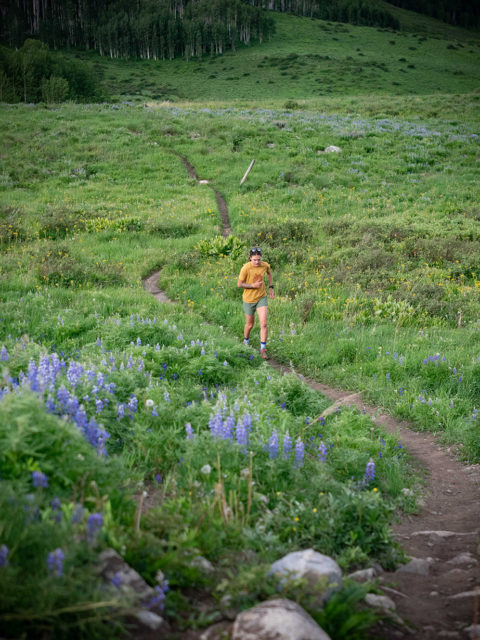
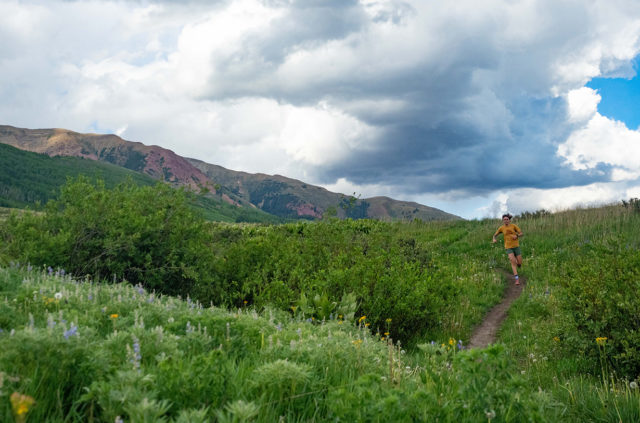
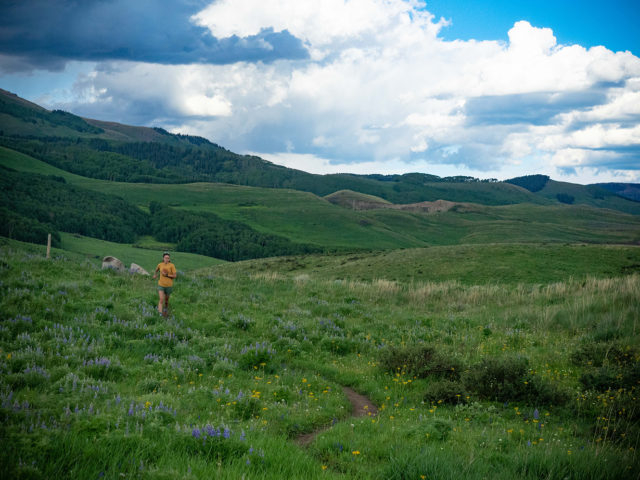
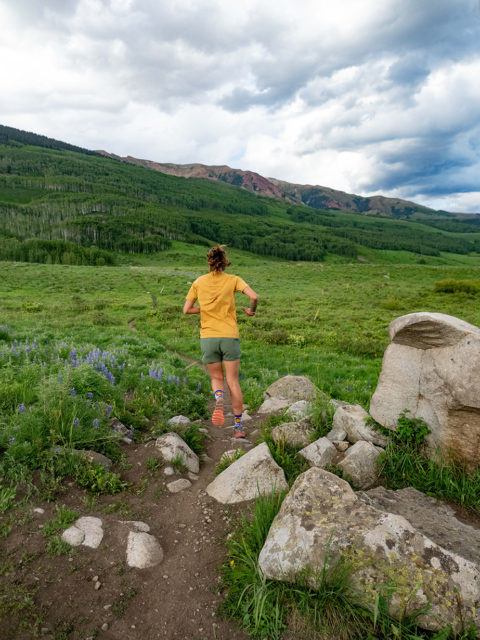
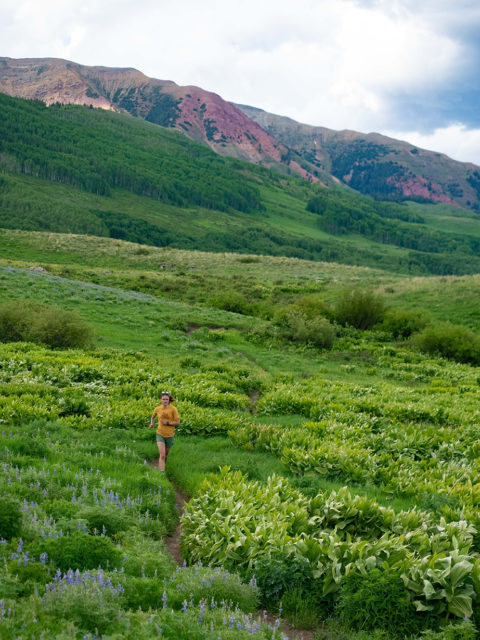
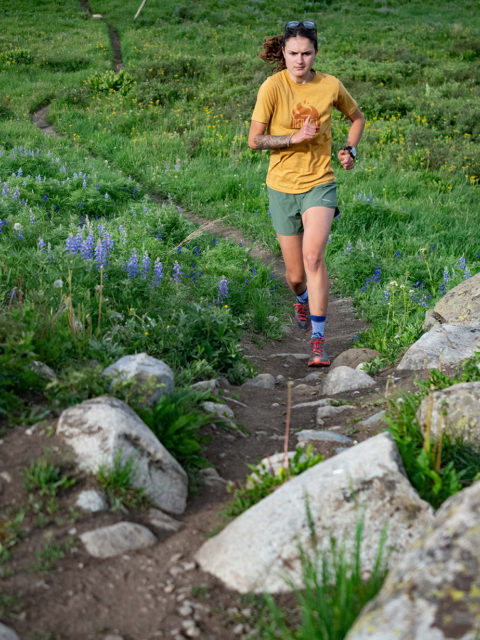
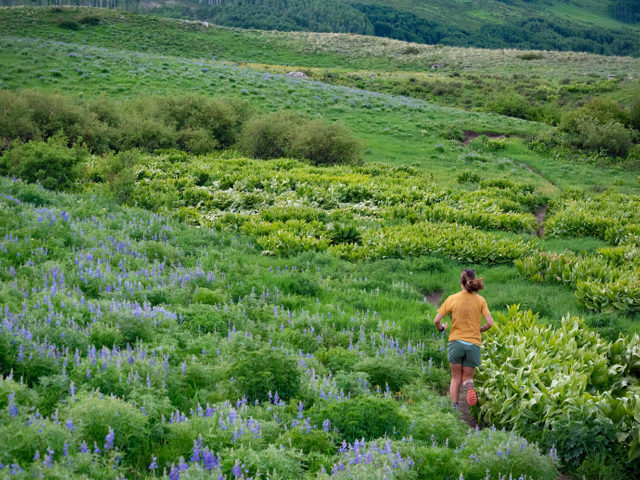
I like more minimal shoes and really enjoyed these to start with, but in the end came to the conclusion that they were limited in application and would be a whole lot better if they just did away with the wavy midsole (they could keep the outsole gaps to maintain flexibility).
As noted in the review, the wavy sole has very little protection from rock strike through the thin bits – I generally like softer soles and dislike rockplates but these shoes really don’t play well in rocky terrain and running on larger ‘cut’ gravel is positively uncomfortable.
The bigger issue though is that the waves create pressure points after a while and I find myself getting blisters and sore points at the waves which limits the mileage that I can do in them.
5k on buffed out single track – great. If you want them for anything technical, or longer then there are better options IMHO, even if you like more minimal shoes. Try the Altra superior, or some of the Inov8 options instead.
A big disappointment after helios 2.0. The new “innovative” heel padding with “non-animal leather” becomes slippery in wet conditions, heel is not fixed in shoe – be ready for blisters.
the upper mesh is also much less resistant against find sand – got a large amount of sand into shoe. – coming TRHOUGH the upper mesh!
I also miss the quicklace – for long distance you need to adjust the pressure as feet volume increases.
none of those flaws were present in previus model!
I was a big fan of helios 2.0, had 2 pairs of those, used each of them for about 1000km – but i will probably throw away the new model after first week.
Just wondering how everyone else found the durability on the Helios 3? I’m up to 150 miles and have found the mesh on the sides is already starting to split. Anyone else has this problem?
I just got mine and did my first run. Overall incredibly comfy shoes. But… a bit BUT after about 4-5k I a hot spot started to form on the outside of my big toe (right foot), 20 mins later I had a big blister, exactly where the insole and the shoe meet. I even felt it with my finger after the run, a big, like an edge or something is forming there. I will try to figure something out, because like I said, the shoes seems like a really good fit, hope I can make them work.
This shoes gave me a big big blister on my left big toe :( i actually love running in it.. but the blister is quite a no no.. altho i must say i ran through almost 100 k with a blood blister, forming and re-forming